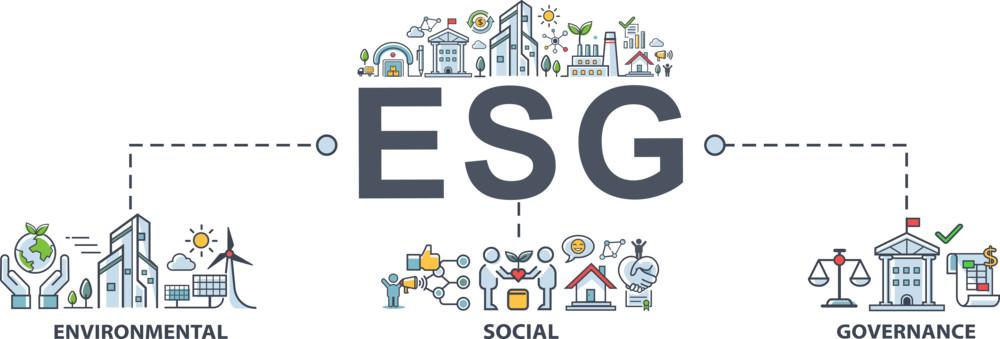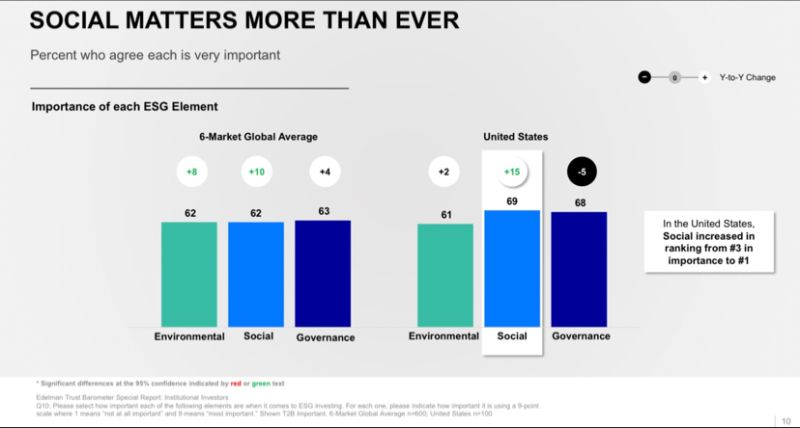A recent survey conducted in 2022 by Bain and Company by the name “Unpacking Asia-Pacific Consumers’ New Love Affair with Sustainability”, reflets clearly how the consumers in Asia-Pacific region have expressed a taste in sustainable goods and spearheaded the way for Environmental, Social, and Corporate governance (ESG) in focus.
It suggests that amongst 16,000 Asia Pacific consumers who participated, 14% have been distressed about environment and social issues, similar to their counterparts from Europe and the United States.
43% of Indians rank sustainability as a top-fifth important principle for purchasing goods.
India, they say, is at the nascent stage of understanding sustainability and sustainable products constitute only 5 percent of the share in food markets.
Consumer handling can be tough especially when a bigger chunk of aware citizenry is favoring and demanding better action for their only available planet, business houses can often comply with the dictate too or assuage these urgent demands by greenwashing for their own good.
But can this prevent any further willful disobedience?
Always known for enjoying the limelight in his own style, Elon Musk recently called ESG metrics a farce in response to the removal of Tesla from S&P’s ESG Index. Though a billionaire can walk away with such a question but do we need to look at it from a different angle?
ESG metrics may include greenhouse gas (GHG) emissions, water usage and wastage, energy utilization, energy efficiency, waste generation and management, employee safety record, business circularity, impact on community etc., as there is no definite criteria for measuring sustainability. Assessing these risks and parameters is a difficult task but it matters a lot.
“Increasingly, we educators are facing questions: Is our research responsible? Are we contributing to the larger society? Are we helping companies and governments with the research that we do?”, explains a professor.
Which is the missing link?
ESG investing is commonly regarded as the “do good” opportunity to evolve from traditional investing. However, according to the Stanford Social Innovation Review, the approach we currently imply ceases to generate or at least measure any positive impact but only lessens harm relevant to the status quo like reducing inequality or bolstering public health.
In ESG, these are only limited to the “material factors” influencing the finances of an organization by addition or destruction of its value through factors like product quality issues, customer sentiments, data security and privacy, human capital formation etc. The S’ ambit has now also widened to include the impact of modern supply-chain processes and technology adoption.
Hence, the results vary with gaps in different sustainability indices practicing these factors at different scales including Bloomberg, Dow Jones etc., and consequently varying Companies seer through, even Tobacco Industry.
51 percent of investors as per the Global ESG Survey held in 2021 covering more than 300 institutions find extreme difficulty in calculating and analyzing the S factor to be the most difficult, thereby making it even more problematic to strategize.
Though the COVID days dragged S factor into spotlight but has been reduced to just a check-box exercise, making ESG at times, just serving the corporate strategy.
An expert tells it all: “If you asked anyone who was in the sustainability or ESG space a year or two years ago, they would tell you that somehow the ‘S’ has not been given much visibility… Covid-19 has changed that substantially, and very, very quickly.”
It dares to highlight: “Data is more difficult to come by and there is an acute lack of standardization around social metrics. Investors have been willing to accept data that does little to actually assess the social performance of the companies in which they invest.”
United Nations Principles for Responsible Investment (‘PRI’) stresses on the prominence of S factors and challenges: “The social element of ESG issues can be the most difficult for investors to assess. Unlike environmental and governance issues, which are more easily defined, have an established track record of market data, and are often accompanied by robust regulation, social issues are less tangible, with less mature data to show how they can impact a company’s performance”.
“But issues such as human rights, labour standards and gender equality—and the risks and opportunities they present to investors—are starting to gain prominence.”
“A lack of consensus in the industry surrounding what constitutes the ‘S’ makes it harder to incorporate into investment strategies compared to both the ‘E’ and ‘G’. As such, it often acts as an interaction point between these two elements”.
“The range of issues sitting under the ‘S’ umbrella, along with the qualitative nature of social metrics, further contributes to the difficulty of incorporating the ‘S’ into ESG analysis. A lack of social reporting from companies adds another layer of complexity”, explains the 2019 Global ESG Survey by BNP Paribas.
This happens because social issues are intangible by all means, with the least amount of data to relate their individual impact on a company’s performance. Even the Stanford Social Innovation has recommended modernizing the way S factors get measured for ESG estimation.
Has the S factor ever brought down a firm?
We may have multiple examples of E and G affecting them hard but countable corporate crises are actual failures of ‘S’ e.g., Volkswagen emissions scandal.
The following need to be worked upon, according to the Stanford Review:
1. Standardization – One needs to have a single world-trusted quantifiable standard. The current situation is that every organization (including an NGO) defines, measures and then reports every social impression differently creating highly distorted and incomparable datasets to be used in financial models.
2. Quantification – After the standardization of any social impact, they must be quantified accordingly and a value may be assigned to the unit of social impact. For example, a company claims to have helped 500 families to provide health benefits along with proven evidence. Can this be traded like carbon credit now?
3. Reporting – This step deals with the disclosure of “material” impacts that can pose an equal negative as well as positive risk on an organization’s performance. The world can no longer afford to ignore the issues critical to survival of people and planet but don’t hit the bottom line directly.
What is the matter with S in ESG?
It is already known that damages caused to the environment through conflicts around the world are difficult to bear and in turn, they exacerbate any incoming human rights consequences for people involved, be it their right to enjoy a healthy and sustainable environment.
To help and research in this matter, the NYU Stern analysis reviewed over 1,750 social factors curated from 12 different rating agencies, only to find that just a meagre 8 percent of these ‘S’ indicators were for the people or stakeholders associated, rather a bigger 92 percent were only dedicated to the company efforts and activities.
This concludes that ESG or impacting investment rating agencies have only assessed policies or commitments instead of their impact on societies.
Similar was highlighted by UN Special Rapporteur on human rights and the environment at Geneva: “Peace is a fundamental prerequisite to sustainable development and the full enjoyment of human rights, including the right to a clean, healthy and sustainable environment.”
“In Ukraine for instance, the Russian invasion continues to claim too many victims, killing and injuring thousands of civilians and causing serious human rights violations. It is also consuming vast quantities of energy, producing huge emissions of climate-disrupting greenhouse gases, generating toxic air, water and soil pollution, and destroying nature.”
“Damage to industrial facilities, chemical stockpiles and nuclear power plants can also result in the release of extremely hazardous substances posing an immediate threat to the rights to life and health, and long-term problems caused by exposure to toxic substances.”
“The world is grappling with a devastating pandemic and a triple environmental crisis – climate disruption, collapsing biodiversity and pervasive pollution – delaying progress towards achieving the 2030 Sustainable Development Goals. It is imperative to end wars, ensure peace and begin the healing and restoration processes as soon as humanly possible.”
We, as one human race, are all moving towards an inevitable darker future. Getting ahead in this transition is seemingly difficult but satisfying the growing expectations on social performance and taking it all together with the Environment (the concept of One health) is an opportunity we can’t afford to miss.
Perceiving it as a burden will help to smother a society that is fair, aware, free and ready to lead the change we dream of.



